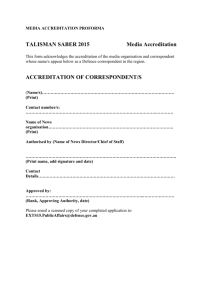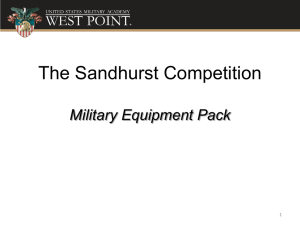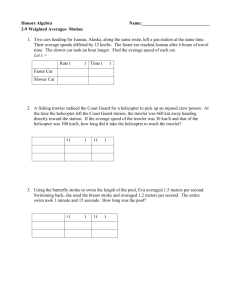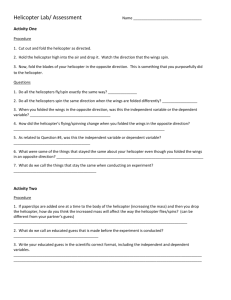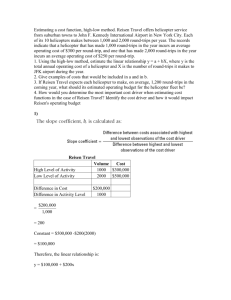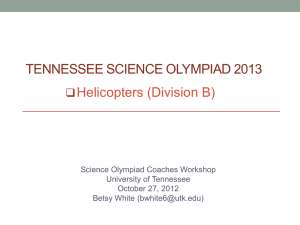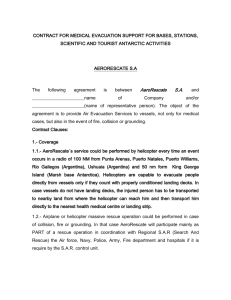Paper Helicopter - Powell County Schools
advertisement
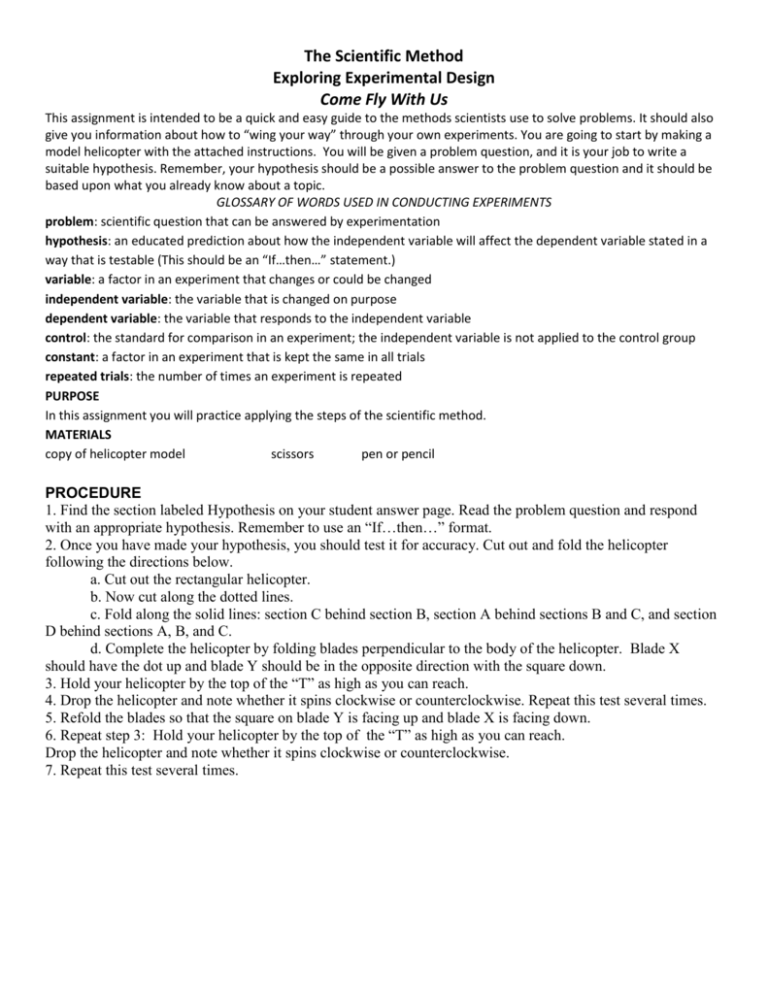
The Scientific Method Exploring Experimental Design Come Fly With Us This assignment is intended to be a quick and easy guide to the methods scientists use to solve problems. It should also give you information about how to “wing your way” through your own experiments. You are going to start by making a model helicopter with the attached instructions. You will be given a problem question, and it is your job to write a suitable hypothesis. Remember, your hypothesis should be a possible answer to the problem question and it should be based upon what you already know about a topic. GLOSSARY OF WORDS USED IN CONDUCTING EXPERIMENTS problem: scientific question that can be answered by experimentation hypothesis: an educated prediction about how the independent variable will affect the dependent variable stated in a way that is testable (This should be an “If…then…” statement.) variable: a factor in an experiment that changes or could be changed independent variable: the variable that is changed on purpose dependent variable: the variable that responds to the independent variable control: the standard for comparison in an experiment; the independent variable is not applied to the control group constant: a factor in an experiment that is kept the same in all trials repeated trials: the number of times an experiment is repeated PURPOSE In this assignment you will practice applying the steps of the scientific method. MATERIALS copy of helicopter model scissors pen or pencil PROCEDURE 1. Find the section labeled Hypothesis on your student answer page. Read the problem question and respond with an appropriate hypothesis. Remember to use an “If…then…” format. 2. Once you have made your hypothesis, you should test it for accuracy. Cut out and fold the helicopter following the directions below. a. Cut out the rectangular helicopter. b. Now cut along the dotted lines. c. Fold along the solid lines: section C behind section B, section A behind sections B and C, and section D behind sections A, B, and C. d. Complete the helicopter by folding blades perpendicular to the body of the helicopter. Blade X should have the dot up and blade Y should be in the opposite direction with the square down. 3. Hold your helicopter by the top of the “T” as high as you can reach. 4. Drop the helicopter and note whether it spins clockwise or counterclockwise. Repeat this test several times. 5. Refold the blades so that the square on blade Y is facing up and blade X is facing down. 6. Repeat step 3: Hold your helicopter by the top of the “T” as high as you can reach. Drop the helicopter and note whether it spins clockwise or counterclockwise. 7. Repeat this test several times. The Scientific Method Exploring Experimental Design Come Fly With Us PROBLEM How will changing the direction that the paper helicopter blades are folded affect the “flight” of the helicopter? HYPOTHESIS: __________________________________________________________________ ANALYSIS You have just performed an experiment. Experiments involve changing something to see what happens. In this case, you refolded the helicopter blades. You made this change on purpose to learn about its effect on the flight of the helicopter. The parts of an experiment that change are called variables. When designing an experiment, you should choose one variable that you will purposely change. You will measure the effect of this independent variable on another variable that you think will respond to the change. The responding variable is called the dependent variable. If you kept every variable except the folds the same in each test, you were making it a fair test. Why? Only the variable you changed could be causing the dependent variable to change because everything else was kept constant. To have a fair test, you also need a control, or a standard for comparison. A control for the helicopter experiment would be an “unchanged” helicopter against which you could compare the results. Your control is the helicopter before the blade directions are changed. After the blades have been flipped, you then have your experimental helicopter. It is important to note that in some experiments, it is impossible to have a control that is completely unchanged. For example, let us say you are trying to determine the effect of light from different light sources on plant growth. The control plant needs some kind of light in order to live through the experiment. So, you have to choose one light source — possibly normal sunlight — to be the standard of comparison. After you refolded the blades of the helicopter, you dropped the helicopter several times and observed the results. These repeated trials enable you to be more confident of your results. If you conducted your experiment only once, the results could be due to an error or a chance event, such as a draft. But, when you repeat your experiment many times and each time achieve similar results, you can be more confident that your findings are not due to an error or chance. CONCLUSION QUESTIONS Complete the following conclusion questions using complete sentences. 1. In the helicopter experiment, what was the independent variable? 2. What was the dependent variable? 3. List three things you should try to keep constant each time you try this experiment. a. b. c. Read the following paragraph and answer questions 4-10: Bonita wanted to know if adding mass to her paper helicopter would affect how long it would stay in the air. She predicted that adding some mass would help to stabilize the helicopter and keep it in the air longer than a helicopter without extra mass. She experimented with different numbers of paper clips attached to her helicopter. 4. What is the problem question in Bonita’s experiment? 5. What is Bonita’s hypothesis? 6. What is her independent variable? 7. What is her dependent variable? 8. What should her constants be? 9. What can she use for a control? 10. Why should Bonita retest her experiment between 5-10 times?


